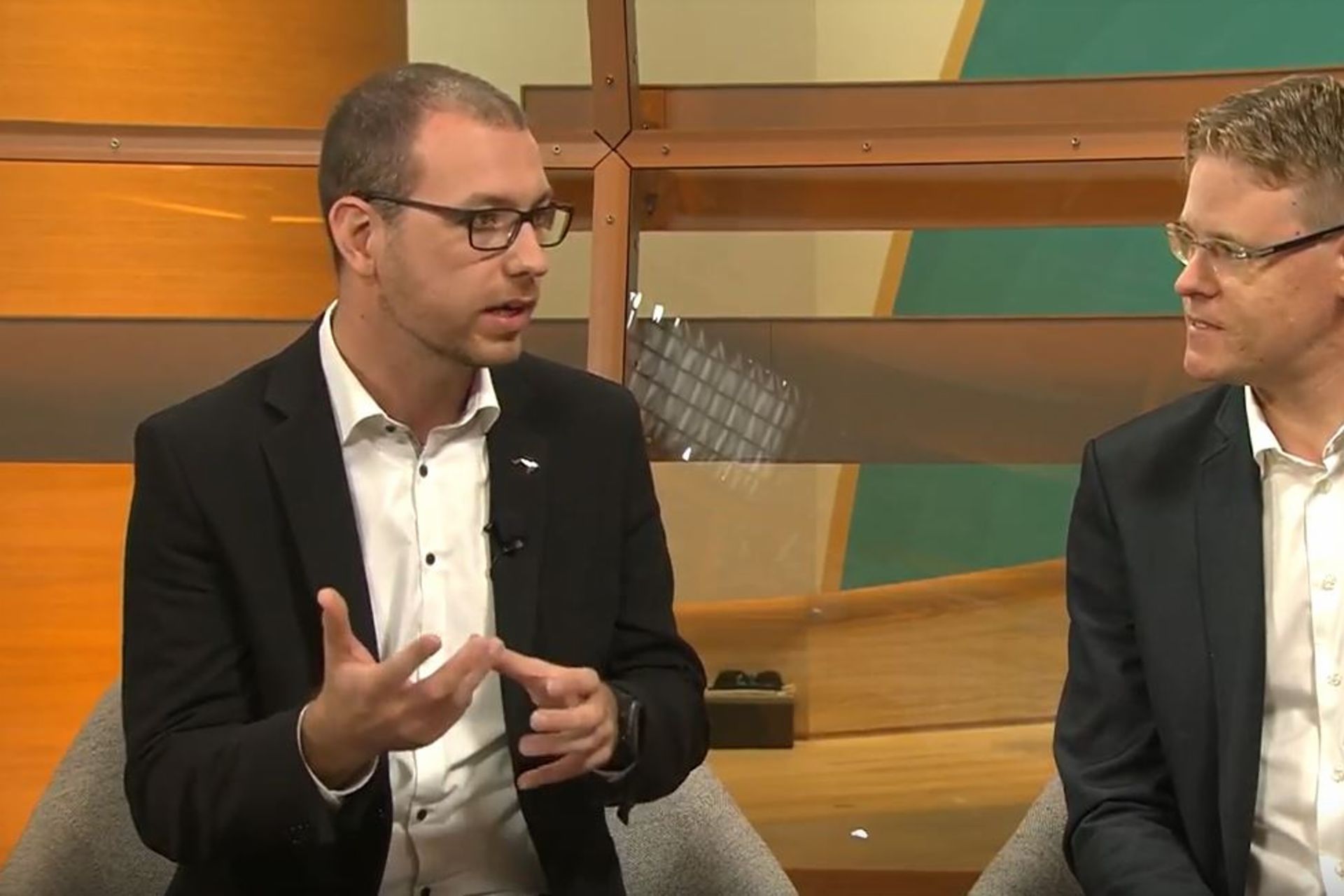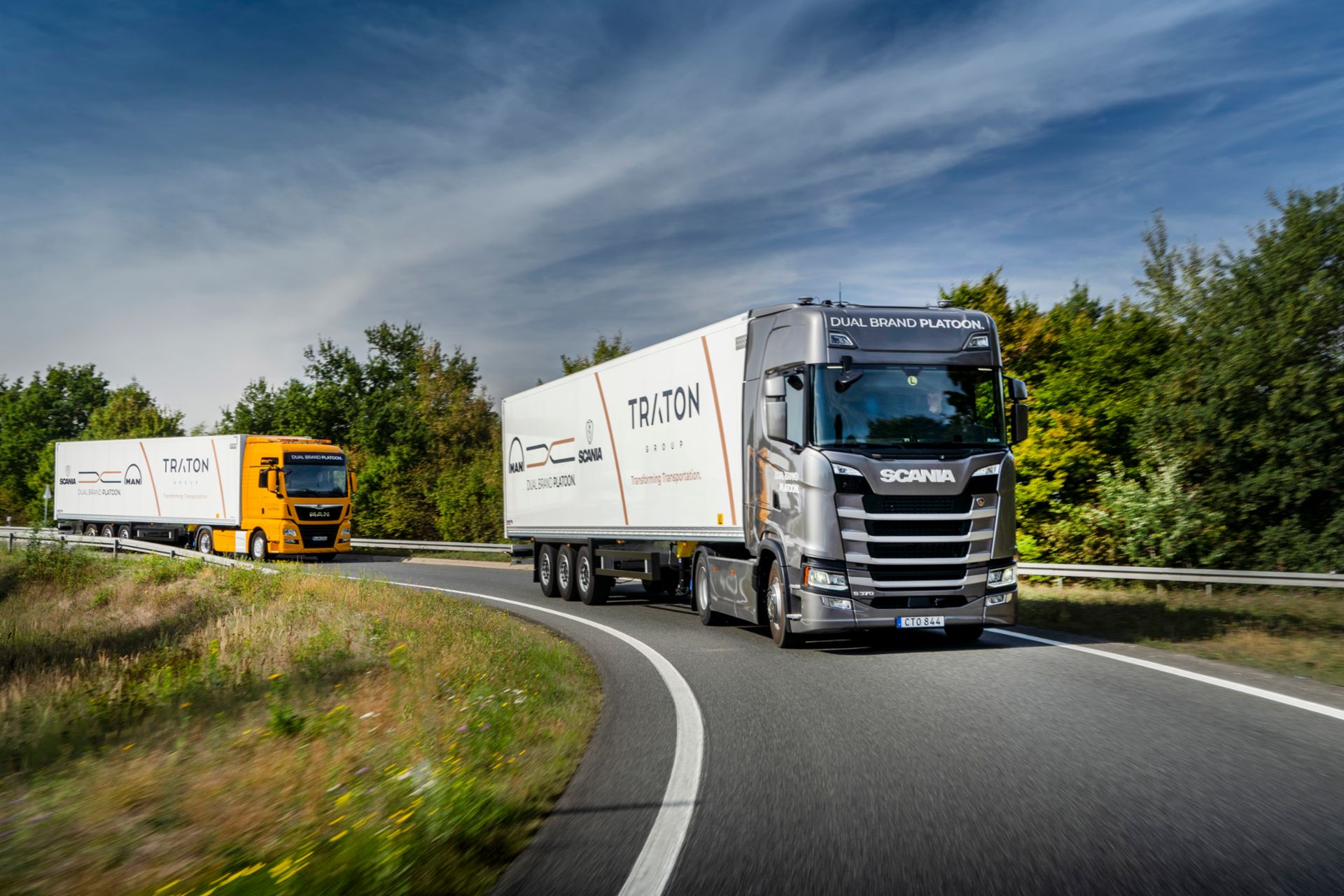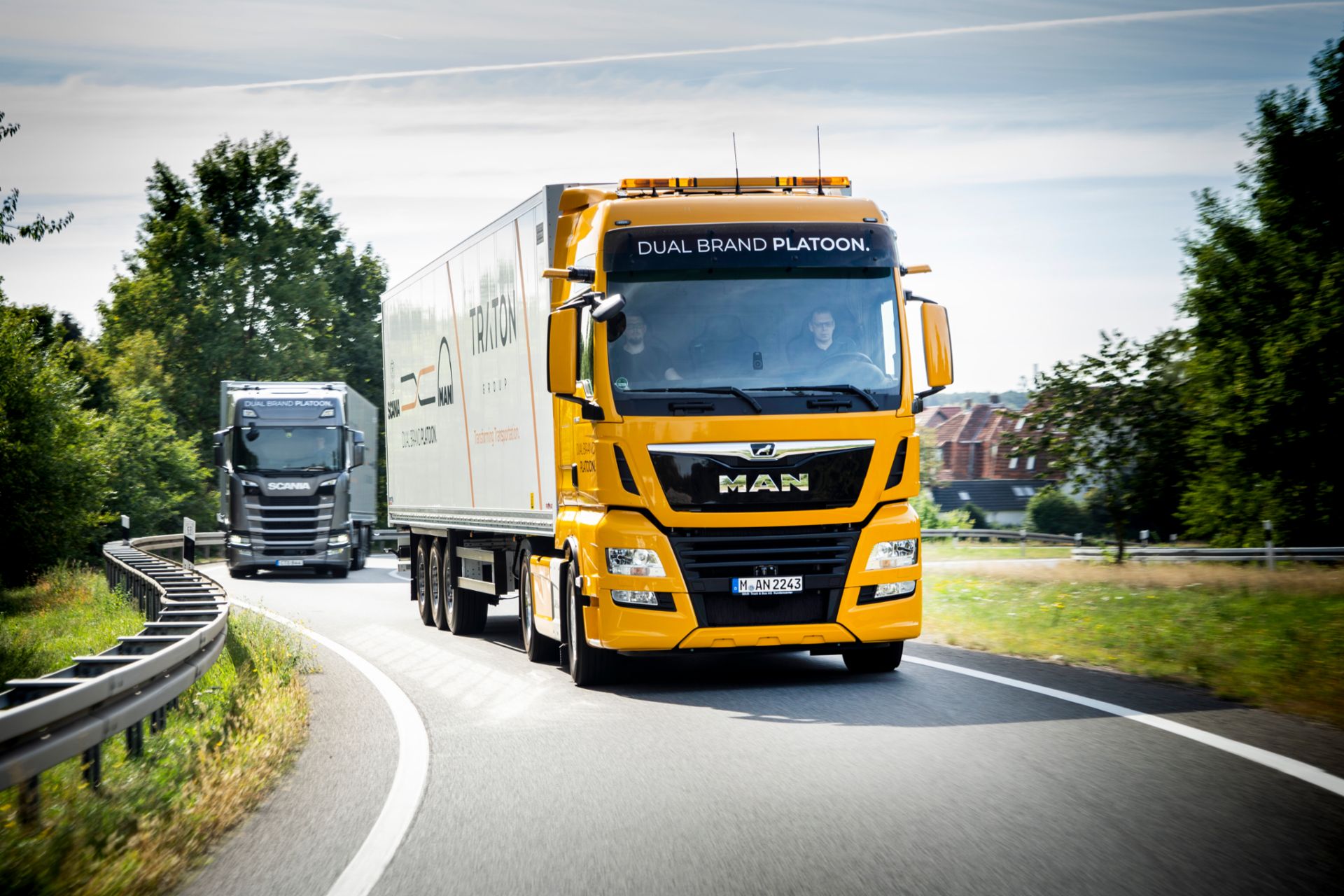
Transportation of the future will be increasingly characterized by automated connected vehicles. Platooning has a decisive role to play in research in this field. The term “platooning” is used to describe connecting several vehicles driving closely together to form a convoy. An IT-based steering system allows two or more trucks to be connected digitally and electronically. TRATON believes that platooning is an important step on the road to automated driving and that it helps to optimize the transportation network. After all, platooning improves fuel economy and lowers CO2 emissions—all the while making driving considerably safer.
“The technical solutions MAN and Scania develop are really good—the challenge is combining them together”
TRATON is pressing ahead with the joint development of a dual-brand platoon thanks to its brands working closely together. The special thing about this technology? Dual-brand platooning makes it possible to connect vehicles from different brands into one truck convoy. TRATON’S dual-brand platooning project represents a milestone for the transportation industry and is the result of intense collaboration within the Group. Daniel Feldmeier, MAN Research department, and Per Sahlholm, Scania Autonomous Solutions, are project managers responsible for coordinating this joint cross-brand project on behalf of MAN and Scania, respectively. Together with a team of MAN and Scania engineers, they have been working to gradually implement the technological solutions of the two brands in the field of dual-brand platooning for about a year. “The technical solutions MAN and Scania develop in-house are really good and work for each brand independently. The challenge is combining them together,” says Per, project manager responsible for dual-brand platooning at Scania.
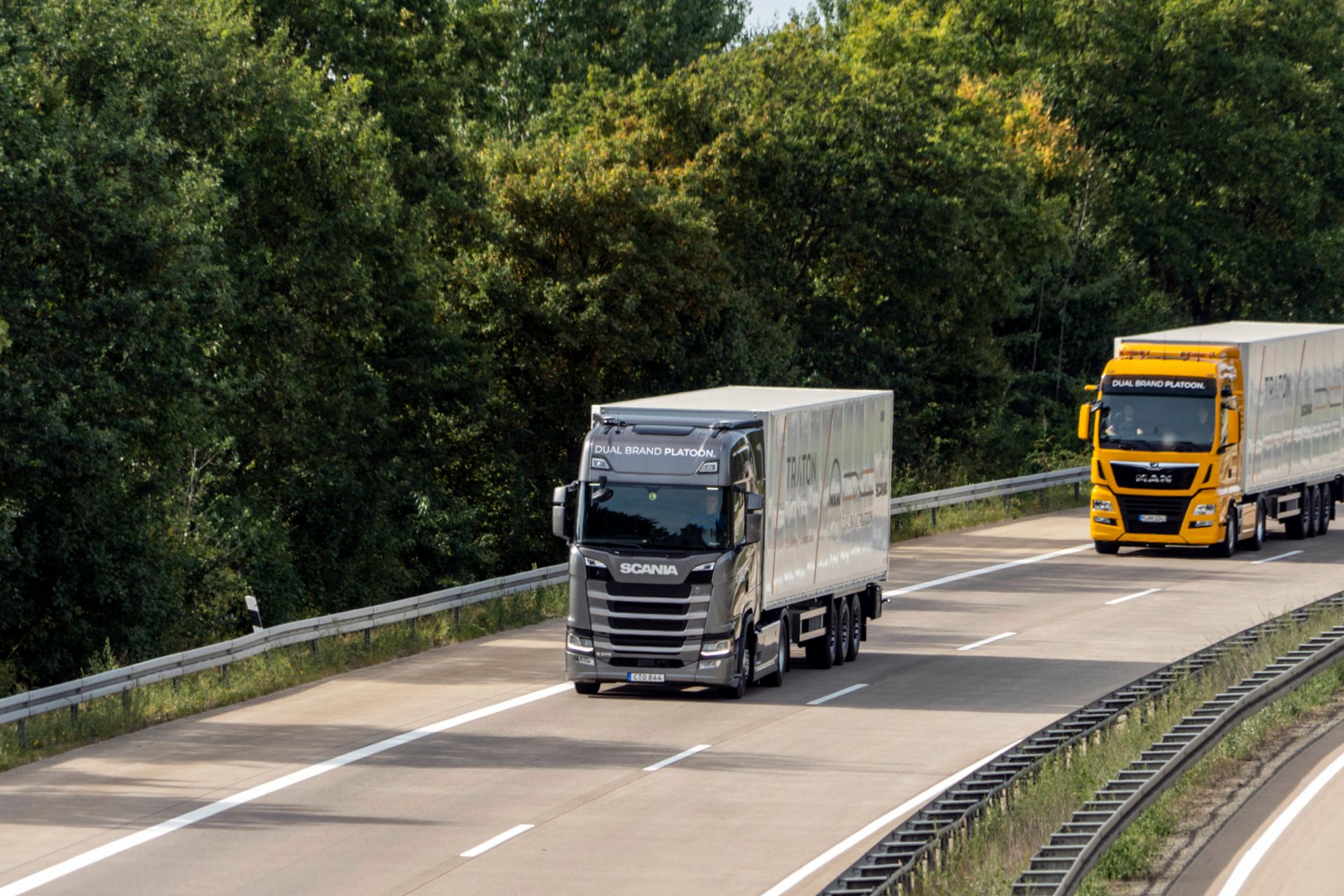
Regular meetings on site and via Skype
Although working together requires the teams to meet on a regular basis, both brands are also carrying out independent research at their headquarters in Munich (MAN) and Södertälje (Scania). “We have defined various steps and issues that we are working on. As part of this process, we meet at various locations in Sweden or in Germany and spend a week working together, for example. After these meetings, each team gets set ‘homework’ it then tackles back over at MAN or Scania, either in the office or using the brand’s own vehicles. We often synchronize our results over the phone or via Skype. As soon as we have reached the next step, we meet again and work on our trucks together,” explains Daniel, dual-brand platooning project manager at MAN.
MAN and Scania lead the way for platooning tests under real-life conditions
MAN and Scania are long-standing brands that boast comprehensive expertise and are considered number one in the field of platooning. Both MAN and Scania have already carried out numerous platooning tests on public roads under real day-to-day conditions within the framework of research initiatives and pilot projects. Together with DB Schenker, MAN introduced test platoons on the A9 highway between Munich and Nuremberg in the spring of 2018. Around the same time in March, Scania launched a pilot project in cooperation with Spanish transportation company Acotral between Ribarroja and Getafe, as well as Valladolid and Getafe.
The dual-brand platooning concept: a shared vision and a lively discussion
It is important for the brands to agree and coordinate considering how independent they are and how much individual competency they have. According to Daniel and Per, what it ultimately comes down to when organizing and prioritizing the individual steps is a shared vision of terrific transportation solutions. “All of us in our group, be it at MAN or Scania, are die-hard truck fans who love what they do,” explains Daniel. Per adds: “We don’t encounter any problems when we pull together. On the contrary: we look forward to sharing ideas and enjoy working on our products together.”
Dual-brand platooning brings added value to brands and the Group
It’s not just the individual brands that profit from this joint research project—the TRATON GROUP as a whole is also reaping the benefits. New insights derived as a result of the cross-brand collaboration enable MAN and Scania to draw inferences for their own research. “By comparing and sharing the results MAN and Scania have achieved thus far, we come up with new ideas while learning something new as a brand,” explains Daniel. The joint project does, however, also make a valuable contribution to the TRATON GROUP as a whole and offers customers the opportunity to access cross-brand solutions when using the products. “As soon as dual-brand platooning is approved for real-life driving scenarios, customers of all TRATON brands will be able to use dual-brand platoons to connect all their products together. That’s great to know,” adds Per.
Strengthening the brands’ individual competencies and combining them together—that’s TRATON’s aim. There is already potential for dual-brand platooning cooperation across all of the Group’s brands. In the long term, it could even be possible to combine all brands of different manufacturers that comply with the given criteria as standard throughout the EU. A win-win for all involved—manufacturers and customers alike.
MAN and Scania pull together as part of a joint development project
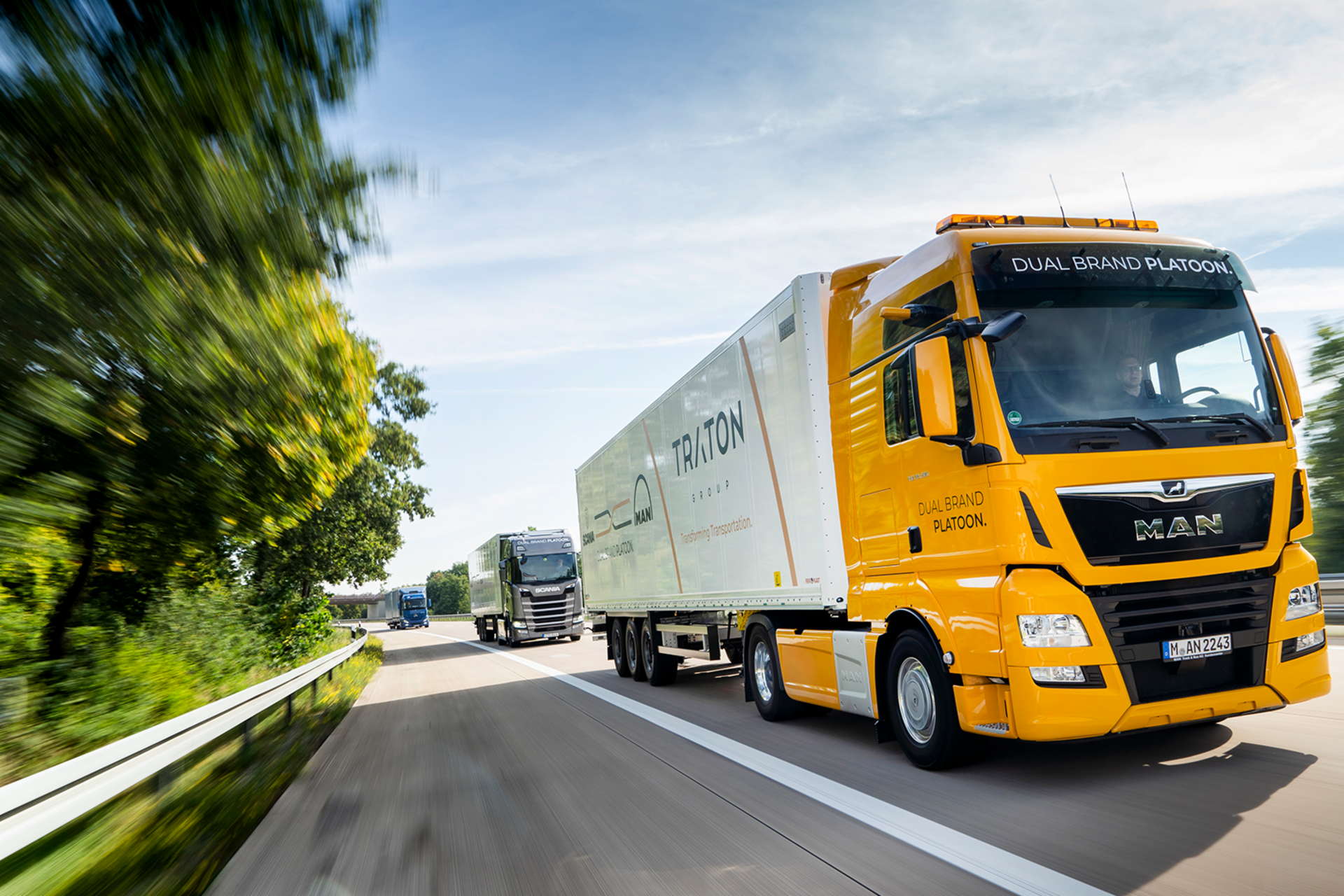
Interview with Daniel Feldmeier and Per Sahlholm
